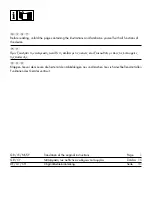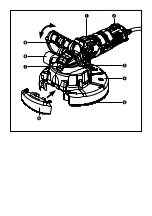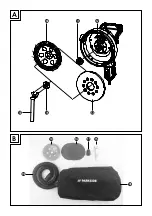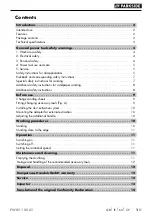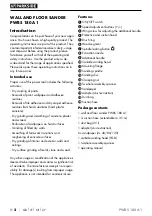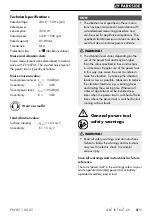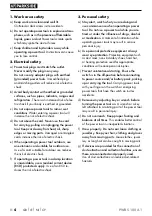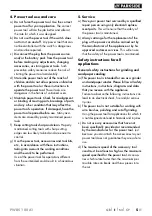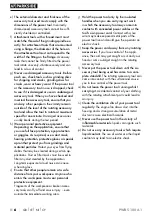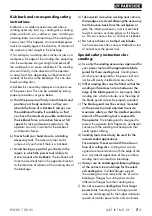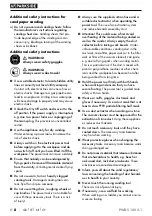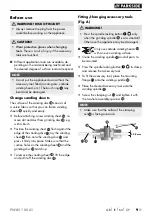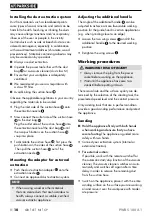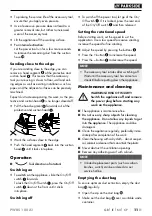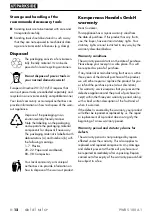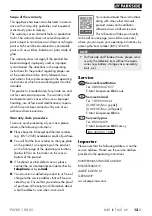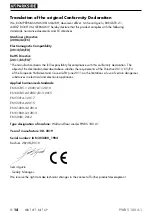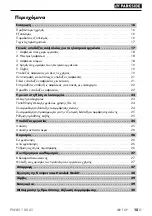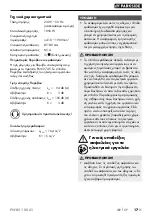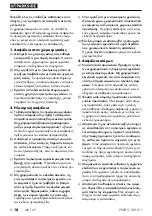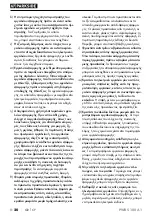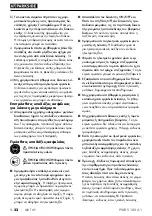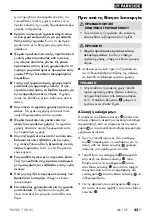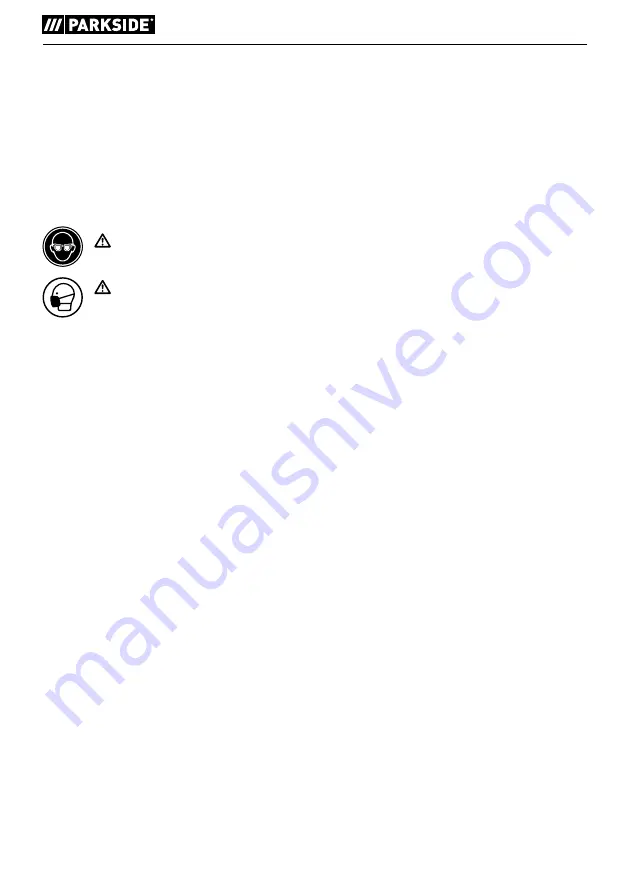
PWBS 180 A1
■
8
│
GB
│
IE
│
NI
│
CY
Additional safety instructions for
sandpaper sanding
a)
Do not use oversized sanding sheets: follow
the manufacturer's instructions regarding
sanding sheet size.
Sanding sheets that pro-
trude beyond edge of the sanding disc can
cause injury, blockage, tearing of the sanding
sheets or kickback .
Additional safety instructions
WARNING!
Always wear safety goggles.
WARNING!
Always wear a dust mask!
■
Use a suitable detector to locate hidden utility
lines or consult your local utility company.
Contact with electrical lines can cause fires or
electric shocks . Damage to a gas pipeline can
lead to an explosion . Drilling into a water pipe
will cause damage to property and may cause
electric shock .
■
Unlock the On/Off switch and move it to the
off position if the power supply is interrupted,
e.g. due to a power failure or unplugging of
the mains plug.
This prevents an uncontrolled
restart .
■
Use the appliance only for dry sanding.
Water entering a power tool will increase the
risk of electric shock .
■
Always switch on the electrical power tool
before applying it to the workpiece and do
not switch it off until you have lifted it off the
workpiece.
The power tool can move suddenly .
■
Ensure that nobody can be endangered by
flying sparks. Remove all flammable material
from the vicinity.
Grinding metal creates flying
sparks .
■
Do not use worn, torn or heavily clogged
sanding tools.
Damaged sanding tools can
tear, fly off and injure someone .
■
Do not use cutting discs, roughing wheels or
cup brushes.
The power tool is not suitable for
use with those accessory tools . There is a risk
of injury!
■
Always use the supplied suction hose and a
suitable dust extractor when operating the
power tool.
The use of an extraction system
can reduce hazards caused by dust .
■
Attention! This could cause a fire! Avoid
overheating of the material being sanded as
well as the sander. Always empty the dust
collector before taking work breaks.
Under
unfavourable conditions, sanding dust in the
dust sack, microfilter, paper sack (or in the filter
sack or filter of the vacuum cleaner) can ignite,
e .g . due to flying sparks when sanding metals .
This is a particular risk if the dust is mixed with
paint or polyurethane residues or other chem-
icals and the workpiece has become hot after
being worked for a long time .
■
Hold the power tool firmly with both hands
when working and ensure that you have
secure footing.
The power tool is guided more
safely with two hands .
■
Wear ear muffs, goggles, dust mask and
gloves if necessary. Use a dust mask that is at
least a class FFP2 particle-filtering half mask.
■
Use a dust extractor when working on stone.
The vacuum cleaner must be approved for the
extraction of stone dust.
Using these applianc-
es reduces dust hazards .
■
Do not touch accessory tools until they have
cooled down.
The accessory tools become
very hot when working .
■
Wear protective gloves when changing the
accessory tools.
Accessory tools become warm
during prolonged use .
■
Do not process materials that release substances
that are hazardous to health, e.g. beech or
oak wood dust, rock dust or asbestos.
These
substances are considered carcinogenic .
■
Inform yourself about the valid regulations/
laws concerning the handling of dust hazard-
ous to health in your country.
■
Never touch the running sanding tool.
There is a risk of personal injury .
■
If necessary, use a scaffold for working.
When working on a ladder, you cannot ensure
a secure footing .
Summary of Contents for 303200 1904
Page 3: ......
Page 4: ...A B ...


